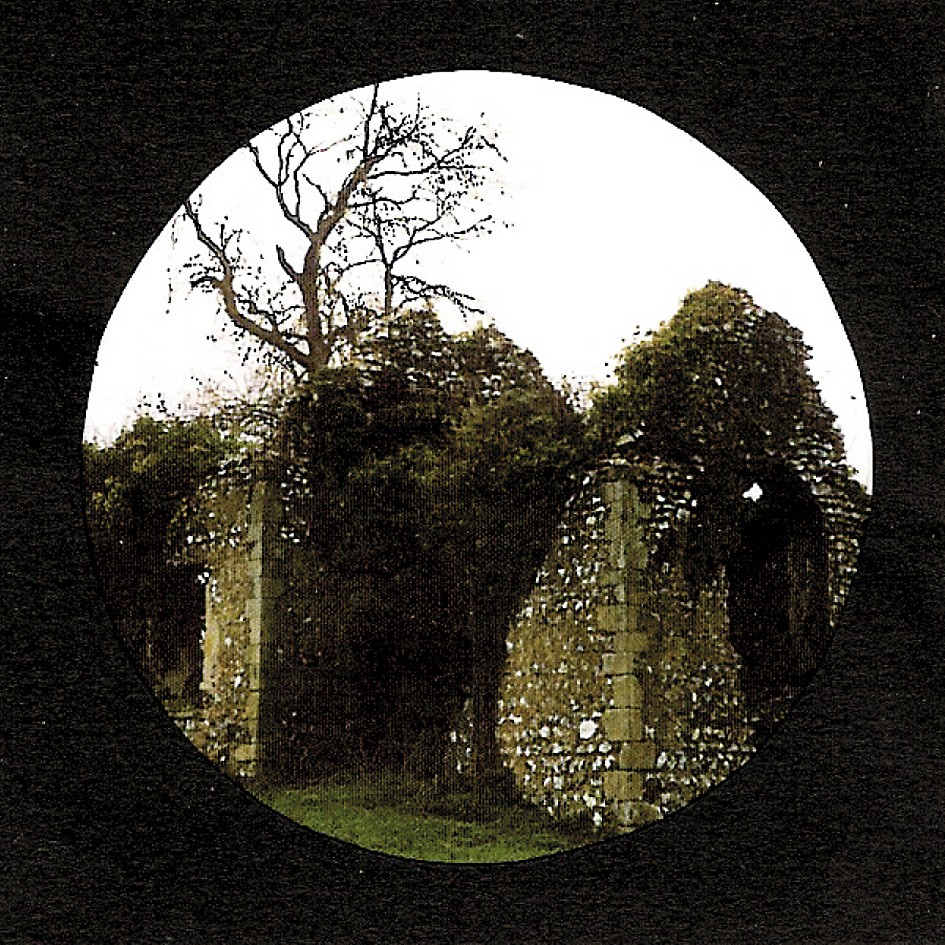
25.02.2011 00:00:00
‘When we found Bix there were some very heart-aching days when we might not have got it...that wildness was very important...when I saw the old chapel – I don’t think the script said that they were in a ruined chapel or anything like that, they were just in the forest – I thought ‘wow!’ I just hung out for it.’
Piers Haggard. Film Director of ‘Blood on Satan’s Claw.’
Atavism (noun). Definition 1. Reappearance of a remote ancestral characteristic, a throwback. Definition 2. Reversion to an earlier type. (Latin atavus ancestor)
‘For ever and for ever, world without end.’
Arthur Machen
A flame is brought to light the oil burner of a nineteenth century Magic Lantern. A dark twist of fume travels out the painted tin chimney as a slow disc of warm, broad light illuminates on screen. Within its orbit develops the image of a ruined chapel, alone, deep in the hills of a cruel heath-land landscape stricken by winter.
In the sombre light, a low, keening rise of birdsong fills the auditorium, greeting the spoken narative of the Lanternist. All elements forming a singular, haunting invocation.
‘Some places ask of their stories and are given them. Devil Daddy. The year is 1970.’
Over thirty years ago, a film director, writer, actors and crew took to a small, secluded English valley to make a horror film for the independent production company, Tigon.
Landscape met story. A tale, set in sixteenth century rural England, centering around the growth of a devil cult, played out in the murderous games of village children. And at its head, the figure of a beautiful young girl, Angel Blake, both seductress and idiot savant to an old pagan god, building his corporeal form through the brutal giving of flesh and blood.
The film carries its most violent and disconcerting scenes in the ruin of an abandoned chapel, its flint walls dressed in spring blossom, witness to this play of perverse ritual, rape and sacrifice.
‘I walk the lonely country roads of Lower Lanthorn Common. To take the images back...a camera pan to hymn.’
Recently entering this past film location summoned a painful, anxious desire to orientate this strange, abandoned realm. The valley of Bix Bottom had become a curious backwater, locked in enchantments, still charged with the vivid resonance of its story, living, existent, on that other, far cinematic plane.
A cold spot.
The lyricism of lantern image and spoken text seek to navigate those layers of simultaneity which comprise this terrain. A compass drawn from a series of cardinal points, touching present landscape, past film location and story character.
What takes place during the performance is not only a return but a further configuration, born of the intensity of an image gleaned from a horror film book of the nineteen seventies: a pictorial including the work of Piers Haggard, Michael Reeves and Robert Fuest, taking on the nature of some lost, magical grimoire during these travels.
Within my lyric, the site again becomes an uneasy fiction, ‘Lower Lanthorn Common’, populated by the ghosts of a film’s making, a film’s story, and the ancient Roman mysteries of the land itself.
Views of the original ruined chapel, now in its contemporary setting, are asked to illustrate the imaginary remains of some mythic sixteenth century grotto, a temple of allegory, where once automated statues moved via the hidden will of some deep, subterranean stream, running in urgent path from beneath the hills.
Magic Lantern and spoken word weave images of location and original stills. We peer through windows, filmic portals open both to the chapel space within and the rich, pastoral landscape outside.
Actors gone. Automata lost. Broken from their clever pedestals. Actor’s marks. The empty niche. But still, in character, the haunting, fierce sensation of each scripted, mechanical action remains. From the shadow of flint walls to the close supernal of the woodland grove.
Our horror film.
My invocation.
A calling to ghosts.
‘Angel risen...’
The work is also my romance. The chapel space a parlour seance, a tribute to the character of Angel Blake and the remarkable acting of Linda Hayden, that moves beyond portrait.
More than mirror, in each performance, for ever, she is born: the dark, murderous child of our longing for sensation; the intensity of our own response.
It is through the guidance of her image that all things return to find their mark.
Gnosis.
The sum of these images find confluence through the medium of the Magic Lantern, the simple optical projector originally concieved in 1646 by Athanasius Kircher in his ‘Ars Magna Lucis Et Umbrae.’
The lantern, reaching its height of popularity in the nineteenth century, represents the very beginnings of cinema, with its echoes of the ‘fantasmagorie’ of Melies and the supernatural stage illusion and automata work of Robert-Houdin.
It is during ‘Devil Daddy’ that the physics of its natural magic of glass, flame and shadow-play take on a compelling, atavistic role, made rich in the telling.